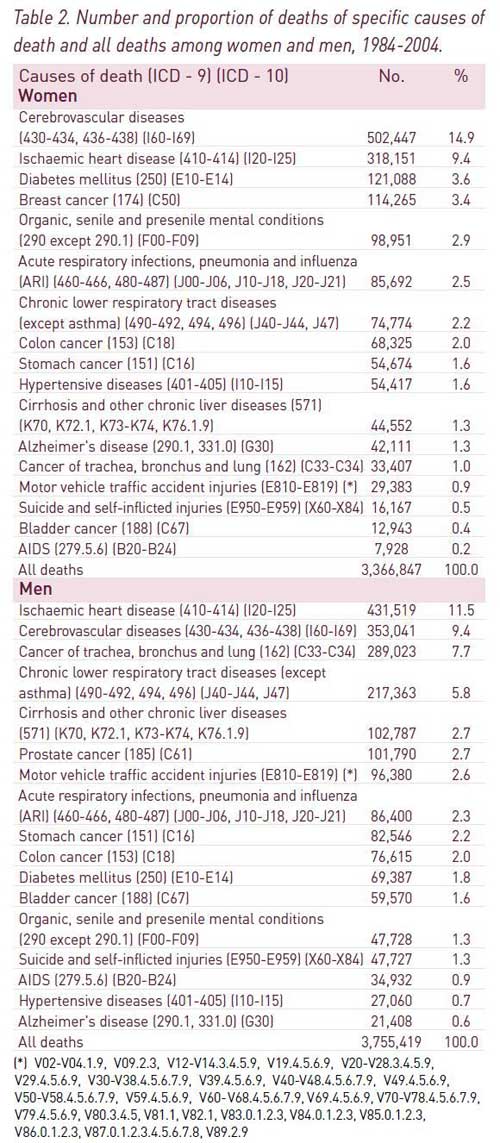Atlas of Mortality in Spanish Municipalities and Census Tracts (1984-2004)
Methodology: Data sources > Mortality data
In Spain, as is often the case in many other countries, the most comprehensive source of small-area health statistics is mortality data. Mortality statistics provide a unique resource of readily-available indicators for small geographic areas over long periods of time with a reasonable level of comparability. In Spain the completion and coding of death certificates follows the World Health Organization (WHO) recommendations and studies have shown that quality of mortality statistics in Spain is comparable to other European countries (16) (17). The coding procedure is decentralized to each Autonomous Community but it is reviewed by the Spanish National Institute of Statistics (Instituto Nacional de Estadística, INE), a self-governed agency attached to the Ministry of Economy. Mortality statistics contain all people including foreigners who die in Spain whereas Spaniards dying abroad are not included. For this atlas, data on mortality of 2,218 Spanish small areas for all causes of death and specific causes of death were obtained from the original death certificates reported to the INE and annually published by the Natural Movement of the Spanish Population (Movimiento Natural de la Población Española). For each death, age, sex, three-year period and area of residence data were obtained. The data were aggregated by area of residence, sex, 18 5-year age groups (0-4, 5-9,…, 85+), 3-year time-period (1984-1986, 1987-1989, ..., 2002-2004) and specific cause of death. The total numbers of deaths during the study period of 21 years (1984-2004) were: 3,366,847 among women, and 3,755,419 among men, with the number of deaths per area varying widely depending on area size. Mortality data from cities by census tract, age, time, sex and cause of death have been obtained from Autonomous Community mortality registers, or in the case of Barcelona, from the city registry. These data correspond to all deaths occurring among residents of each city during the period 1996-2003. The data have been aggregated for the period 1996-2003 by census tract, sex, age and cause of death.
Based on the cause-specific mortality data, the 17 leading causes were grouped following a scheme proposed by the Epidemiological Surveillance Unit of the National Epidemiological Centre (Spanish Ministry of Health) (18). The underlying cause of death in the death certificate was coded according to the 9th revision of the International Classification of Diseases (ICD-9) (19) during the period from 1984 to 1998, and using the 10th revision of the International Classification of Diseases (ICD-10) (20) for the years from 1999 to 2004. Table 2 presents the ICD-9 and ICD-10 codes, with the corresponding numbers and proportions of deaths, for the specific causes analysed in this atlas. It should be noted that AIDS was only analysed for the period from 1990 to 2004.



